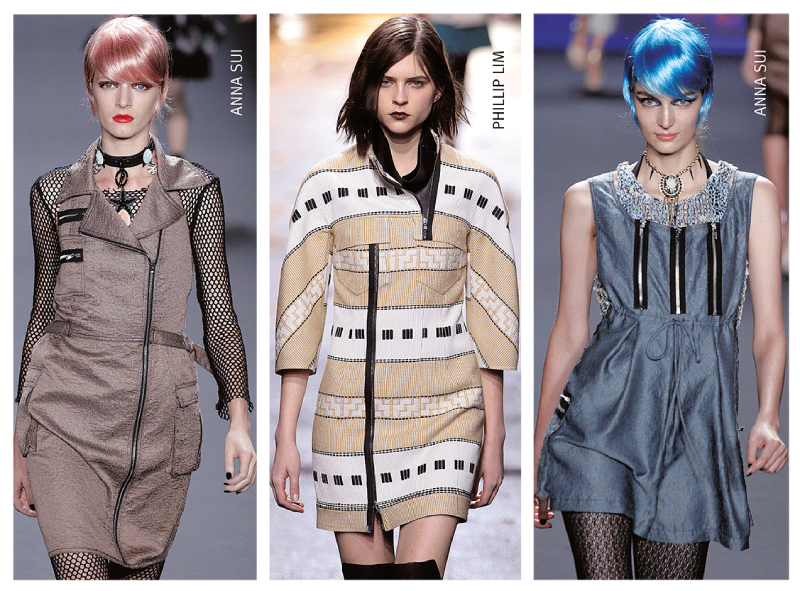Zippers, those practical fasteners we often take for granted, play a crucial role in fashion and functionality. From securing our clothes to accessorizing our outfits, zippers have revolutionized how we dress and use everyday items. This article delves into the fascinating history, varieties, and versatile uses of zippers, shedding light on their undeniable significance in fashion and beyond.
What is a Zipper and how does it Function

Two strips of fabric tape with a row of metal or plastic teeth are fastened together by a sliding mechanism to form a zipper. The teeth interlock or separate when the slider is dragged up or down, opening or closing the zipper. Thanks to their clever yet essential function, zippers are an indispensable part of many products, ranging from bags and apparel to tents and suitcasestion.
Origin and Evolution of Zippers

The zipper’s journey began in the late 19th century when Elias Howe, the sewing machine inventor, patented an “Automatic Continuous Clothing Closure” in 1851. However, it wasn’t until 1913 that Gideon Sundback, a Swedish-American engineer, created the modern zipper design we recognize today. Sundback’s “Separable Fastener” significantly improved, featuring interlocking teeth and a slider mechanism. The zipper gained widespread popularity in the 1920s, initially used in boots and tobacco pouches before becoming a staple in fashion.
Different Varieties of Zippers
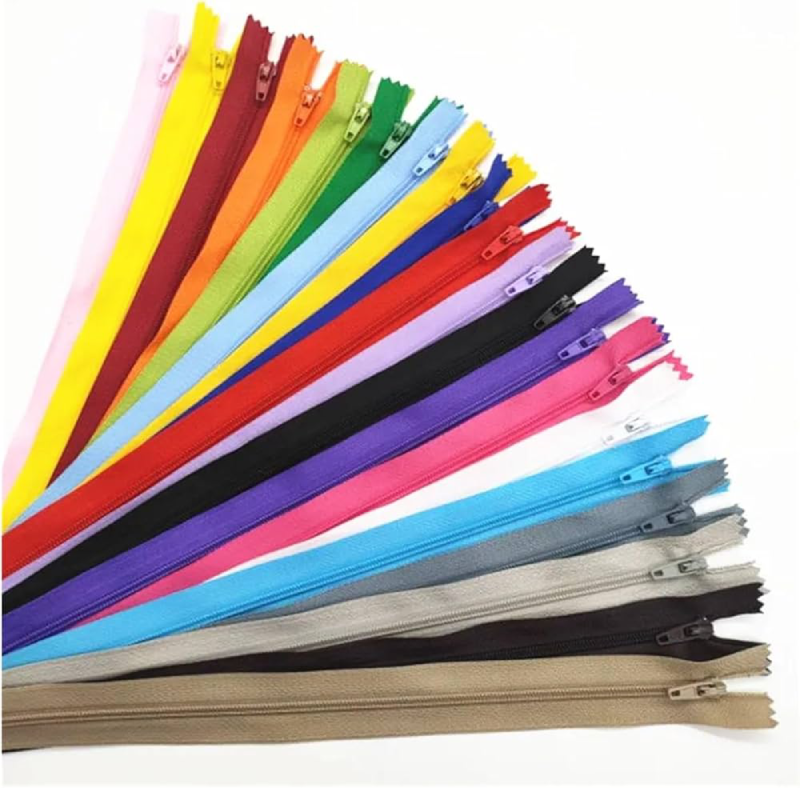
- Coil Zippers: Coil zippers are lightweight and flexible, which makes them perfect for garments like dresses, skirts, and jackets. They are made from coiled nylon or polyester.
- Metal Zippers: With teeth made from brass, aluminium, or nickel, metal zippers are solid and durable, commonly used in jeans, leather jackets, and heavy-duty garments.
- Plastic-Molded Zippers: These zippers feature teeth made from injected plastic, offering a lightweight and cost-effective solution for bags, jackets, and children’s clothing.
- Invisible Zippers: Designed to be hidden when sewn into a garment, invisible zippers are perfect for elegant dresses and skirts with a desired seamless look.
- Open-End Zippers: Found in jackets and coats, open-end zippers allow the garment to be fully opened, providing easy wear.
- Closed-End Zippers: Commonly used in bags, boots, and pants, these zippers do not separate at the bottom, providing secure closure.
- Two-Way Zippers: Featuring sliders at both ends, two-way zippers can be opened from either direction and placed correctly in long coats and luggage for convenience and ventilation.
- Reversible Zippers: Designed to be used on either side of the garment, reversible zippers are standard in reversible clothing, offering flexibility in style.
- Waterproof Zippers: Coated with a particular layer to prevent water from seeping through, waterproof zippers are essential for outdoor gear, sportswear, and wet weather equipment.
- Decorative Zippers: These zippers come in various colors, patterns, and styles, adding a fashionable touch to garments and accessories, often used in high-fashion items and statement pieces.
Versatile Uses of Zippers
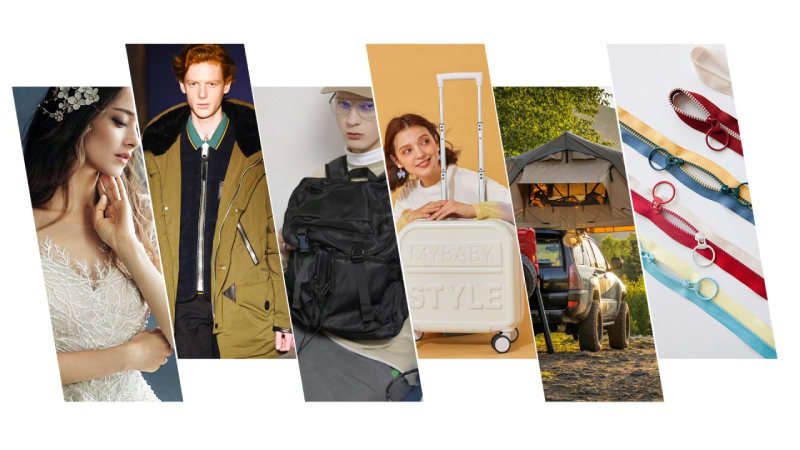
- Clothing: Zippers are essential for fast and secure closure and are used in pants, skirts, dresses, jackets, and more.
- Bags: From handbags and backpacks to luggage and cosmetic bags, zippers ensure the security of the contents.
- Footwear: Boots and shoes often feature zippers for easy wear and removal, adding functionality and style.
- Outdoor Gear: Tents, sleeping bags, and jackets rely on zippers to provide protection against the elements, ensuring durability and convenience.
- Home Textiles: Cushion covers, duvet covers, and upholstery benefit from the convenience of zippers, allowing easy cleaning and maintenance.
- Sports Equipment: Gym bags, sports gear, and equipment cases use zippers for secure storage and easy access.
- Automotive: Car seat covers, upholstery, and accessory pouches in vehicles often incorporate zippers for ease of use.
- Medical: Medical garments, equipment bags, and protective covers feature zippers for accessibility and secure closure.
- Industrial: Protective clothing, gear, and storage solutions in industrial settings often use heavy-duty zippers for reliability and ease of use.
- Fashion Accessories: Zippers are used in wristlets, wallets, and other fashion accessories, adding both function and style.
Different Types of Materials Zippers are Made of
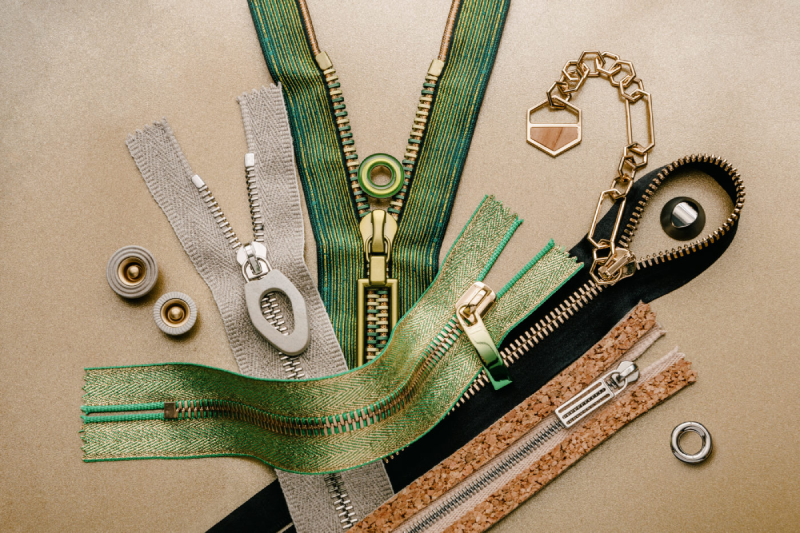
- Nylon: Lightweight and flexible, nylon is commonly used for coil zippers in apparel and bags.
- Polyester: Durable and corrosion-resistant, polyester is a popular material for zippers in various applications.
- Metal: Strong and reliable metals like brass, aluminium, and nickel are used in heavy-duty zippers for jeans, jackets, and industrial uses.
- Plastic: Lightweight and affordable, plastic is used in molded zippers for everyday items and children’s clothing.
- Brass: Known for its strength and classic look, brass is used in high-quality zippers for fashion and heavy-duty garments.
- Aluminum: Lightweight metal used in zippers for clothing and bags, offering a balance of strength and ease of use.
- Nickel: Durable and shiny, nickel is often used in metal zippers for a polished and professional appearance.
- Vislon: A type of plastic zipper known for its strength and versatility, often used in outdoor and sports gear.
- Steel: Heavy-duty metal used in industrial zippers for maximum strength and durability.
- Copper: Copper zippers are often used for a vintage look in fashion items and retro-inspired garments.
Benefits of Using Zippers
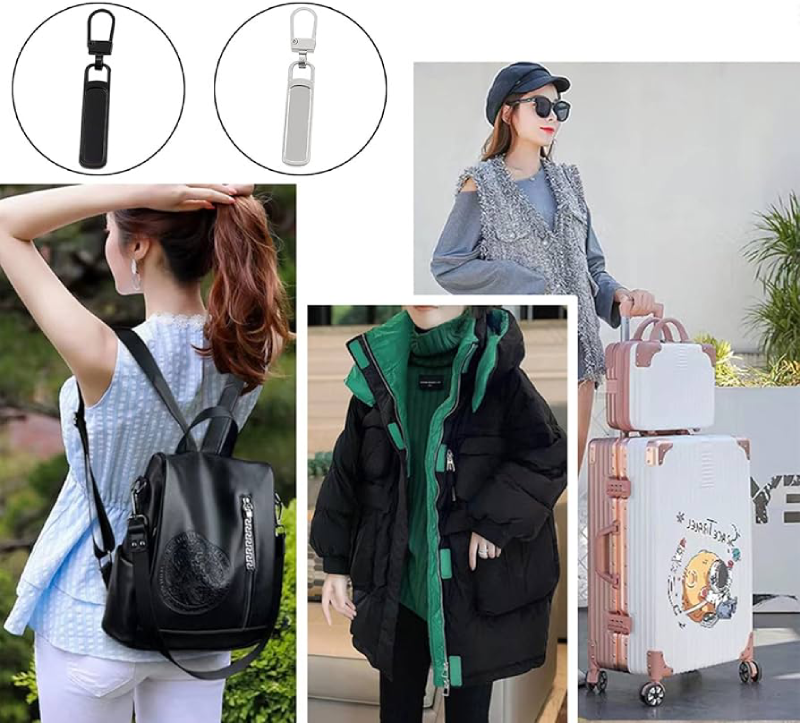
- Zippers provide a quick and easy way to fasten clothing and accessories, saving time and effort
- , and adding a touch of convenience to our lives. They are the unsung heroes of our daily dressing routines, making it easier to get ready and stay organized.
- They securely close items, preventing contents from falling out and ensuring personal belongings are safe. Whether it’s your wallet in your pocket or your laptop in your bag, zippers provide a sense of security in our daily activities.
- Durability: High-quality zippers can withstand frequent use and pressure, extending the lifespan of garments and accessories.
- Their robust construction and reliable performance give us the confidence that they will last, making them a trusted part of our wardrobe and gear.
- From clothing and bags to tents and industrial gear, zippers showcase their adaptability, making them versatile and indispensable daily.
- Aesthetic Appeal: Decorative zippers add a stylish element to fashion items, enhancing their overall look.
- Customizable: Available in various lengths, colours, and designs, zippers can be tailored to suit specific needs and preferences.
- Functional Design: They allow for adjustable openings and closures, providing flexibility and ease of use.
- Ease of Use: Simple to operate, zippers are accessible for people of all ages, including children and the elderly.
- Weather Resistance: Zippers that are weatherproof and waterproof provide weather protection, which makes them perfect for outdoor gear.
- Repairable: Broken zippers can often be repaired or replaced, extending the life of the item and reducing waste.
Some Problems Faced While Using Zippers
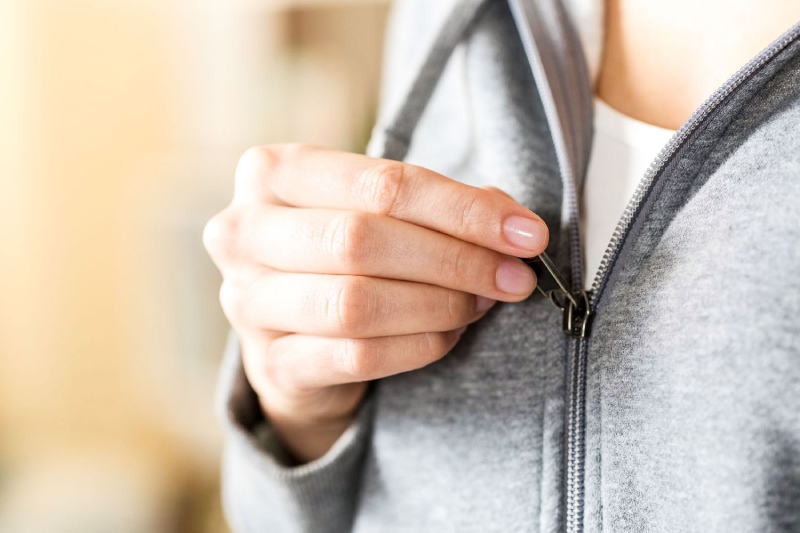
While zippers are incredibly useful, they can also present some challenges. Common issues include zipper jams, teeth misalignment, and slider breakage. Understanding these potential problems can help you maintain and repair your zippers, ensuring they continue to serve their purpose effectively.
- Jamming: Zippers can get stuck, making them difficult to open or close, often due to misaligned teeth or debris.
- Teeth Misalignment: Misaligned teeth can cause the zipper to malfunction, preventing it from closing correctly.
- Slider Wear: Frequent use can wear out the slider, affecting its ability to move smoothly along the teeth.
- Separation: Zippers can separate under pressure, significantly if the fabric or teeth are damaged.
- Corrosion: Metal zippers can corrode over time, particularly in wet or humid environments, compromising their functionality.
- Snagging: Fabric can get caught in the zipper, causing damage to both the zipper and the garment.
- Breakage: Teeth can break off, rendering the zipper useless and requiring repair or replacement.
- Stiffness: New zippers can be stiff and difficult to operate initially, requiring some use to loosen up.
- Noise: Zippers can be noisy when opened or closed, which may be undesirable in specific settings, such as during quiet activities or professional environments.
- Aesthetic Issues: Misplaced or poorly matched zippers can detract from the item’s appearance, affecting the overall design and look.
10 Different Types of Dresses Where Zippers are Necessarily Used

- Evening Gowns: Hidden zippers provide a seamless and elegant look while ensuring a snug and secure fit.
- Cocktail Dresses: Zippers allow easy wearing and removal, maintaining the dress’s shape and design.
- Bridal Dresses: Invisible zippers ensure a perfect fit without compromising the intricate design of the gown.
- Party Dresses: Decorative zippers add a stylish and functional touch to festive attire, enhancing the overall look.
- Prom Dresses: Secure zippers ensure the dress stays in place during dancing and other activities, providing comfort and confidence.
- Casual Dresses: Front or side zippers add a functional element to everyday wear, making them easy to put on and take off.
- Office Dresses: Zippers offer a professional and polished look, maintaining the dress’s structure and style.
- Summer Dresses: Lightweight zippers provide convenience and comfort, ideal for warm weather and casual outings.
- Vintage Dresses: Metal zippers add an authentic touch to retro designs, preserving the vintage look and feel.
- Designer Dresses: Custom zippers enhance high-fashion pieces’ overall aesthetic and functionality, adding a unique and stylish element.
Conclusion
Zippers are more than just a primary fastener; they offer style and functionality, which is why the textile and fashion industries depend heavily on them. From their modest origins to their widespread use, zippers have changed to accommodate various requirements and tastes. We can recognize the value of zippers in our daily lives by being aware of their various kinds, compositions, and advantages. Zippers continue to be a crucial component of contemporary convenience and design, whether used for functional purposes or as a fashion statement.

